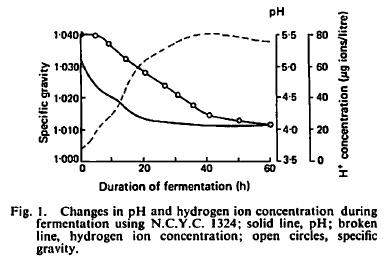SanPancho
Well-Known Member
All I ask is for some insight on how you determined the best pH in your finished beer. I'm not asking for or expecting a written thesis. Or planning to write some sophisticated formulas. Just a bit more insight than 'higher than I'd like'. If you don't know for certain or don't want to share the thought process that's fine. Some people think mash pH is important while others don't. We can just leave it there.
last comment was directed at silver, not you. final ph is just personal preference for the most part. easy to do on your own with your favorite beer, especially the hoppy ones.
packaged beer should be under 4.5 for microbial stability, so thats generally considered the high end at most breweries. as most beers tend to fall in the 4.5ish to 4ish range on their own ( varies by yeast) thats generally the range you'll find most beers in when ready to drink. below that and you start getting a bit of "tart" character. (to me at least)
i simply added some acid to the keg when i felt something was a bit lacking. looked at my notes, saw that i was a bit high in ph after crashing and racking, so i figured it could be a bit muddled. instantly it popped. flavors were the same, just seemed a bit brighter, clearer, etc.
somewhat similar to the sulfate vs chloride changes in beer, in that lower ph seems to be associated with crispness and bright flavors, especially hops. and higher seems to work better in malty, darker and non hoppy beers. thats not saying there's any relation there- gypsum and cal chloride both lower pH. im just saying the perceived differences between them sort of mirror the high/low pH differences i get.
again, personal preference. try it out on your own recipes and see what you prefer.















































![Craft A Brew - Safale BE-256 Yeast - Fermentis - Belgian Ale Dry Yeast - For Belgian & Strong Ales - Ingredients for Home Brewing - Beer Making Supplies - [3 Pack]](https://m.media-amazon.com/images/I/51bcKEwQmWL._SL500_.jpg)










